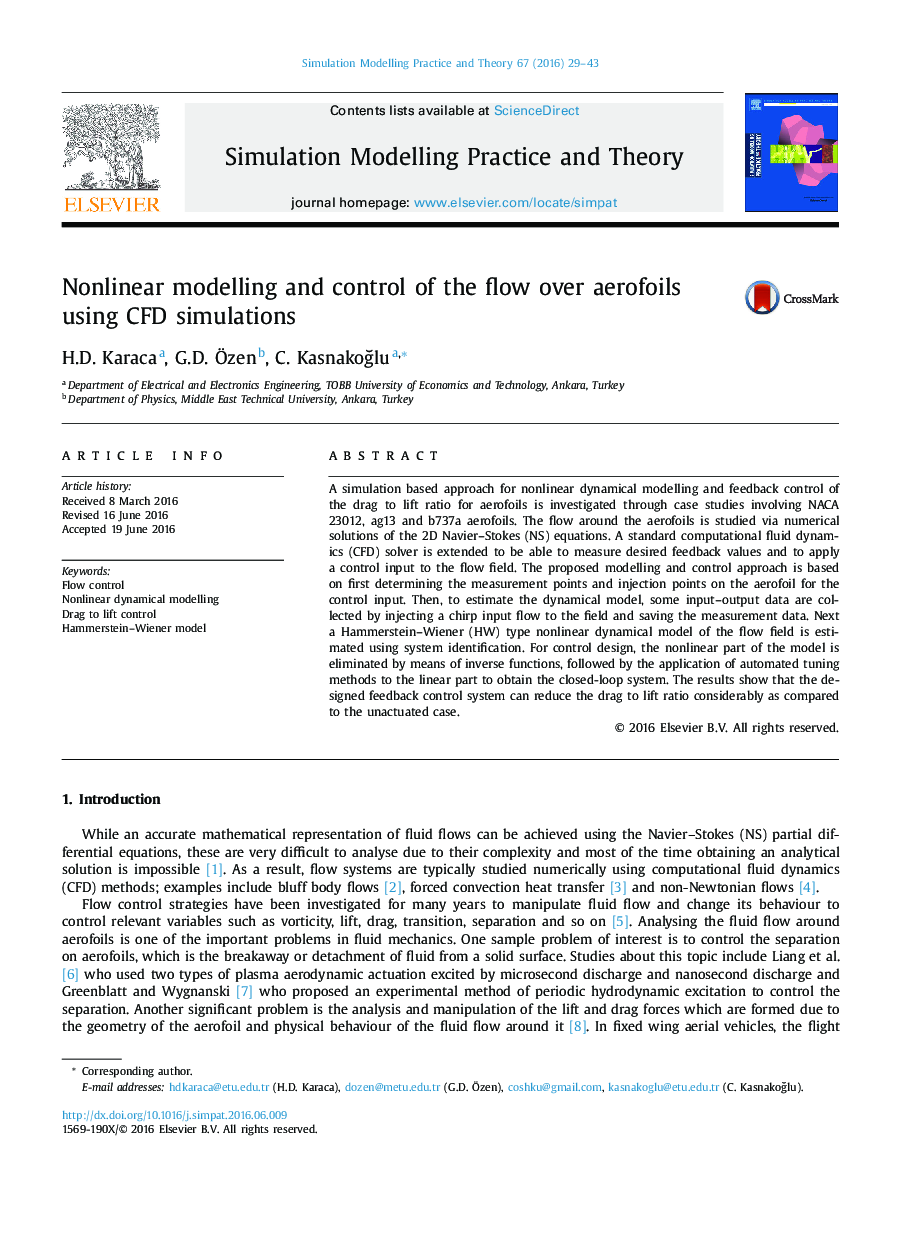| Article ID | Journal | Published Year | Pages | File Type |
|---|---|---|---|---|
| 493572 | Simulation Modelling Practice and Theory | 2016 | 15 Pages |
•A CFD based method for modelling and control of fluid flows is introduced.•The approach is presented through case studies involving three common aerofoils.•Nonlinear dynamical models are identified from CFD simulation data.•Controllers are designed on the nonlinear models using automated tuning techniques.•Drag to lift ratio is reduced to values less than 35% of the uncontrolled cases.
A simulation based approach for nonlinear dynamical modelling and feedback control of the drag to lift ratio for aerofoils is investigated through case studies involving NACA 23012, ag13 and b737a aerofoils. The flow around the aerofoils is studied via numerical solutions of the 2D Navier–Stokes (NS) equations. A standard computational fluid dynamics (CFD) solver is extended to be able to measure desired feedback values and to apply a control input to the flow field. The proposed modelling and control approach is based on first determining the measurement points and injection points on the aerofoil for the control input. Then, to estimate the dynamical model, some input–output data are collected by injecting a chirp input flow to the field and saving the measurement data. Next a Hammerstein–Wiener (HW) type nonlinear dynamical model of the flow field is estimated using system identification. For control design, the nonlinear part of the model is eliminated by means of inverse functions, followed by the application of automated tuning methods to the linear part to obtain the closed-loop system. The results show that the designed feedback control system can reduce the drag to lift ratio considerably as compared to the unactuated case.
